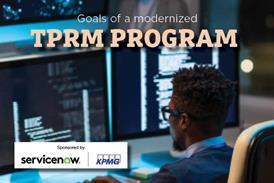As calendar-year companies approach the end of the first quarter, time is getting short to wrap up activities to adopt major new accounting standards.
New rules to bring lease-related assets and liabilities on to corporate balance sheets have gotten plenty of attention, but they may have overshadowed other rules that also require transition to new requirements, especially new approaches to hedge accounting.
The Financial Accounting Standards Board enacted Accounting Standards Update No. 2017-12 on derivatives and hedging to take effect for public companies with the start of 2019. The guidance is now codified under Accounting Standards Codification Topic 815. The standard takes away many of the obstacles and tripping points companies have long navigated to achieve hedge accounting, prompting some to suggest companies would flock to the new guidance optionally ahead of the required effective date.
Yet, 2018 brought less transition to the new hedging rules than some experts expected. Some companies studying the new guidance had questions about some of the transition provisions, and some were just plain busy with bigger changes to revenue recognition and leases.
“Hedging went a little under the radar,” says Heather Horn, U.S. strategic thought leader at PwC. “It’s not that no one was paying attention to it. It was a bit slower for companies to pick up.”
While the standard is required for all companies, it affects companies differently depending on their hedging strategies. “It may not have much of an effect at all depending on what elections they have made in the past and what elections they are going to make,” says Helen Kane, CEO of Hedge Trackers. She has also noticed that especially among corporate entities outside the financial services sector, the hedge accounting standard didn’t get the early evaluation and adoption attention it might have otherwise gotten if not for the bigger changes in revenue recognition and leases.
“Hedging overall is optional. There was some perception that this standard was optional as well.”
Heather Horn, U.S. Strategic Thought Leader, PwC
Companies are not required to use derivative instruments to hedge risk, although many do as part of their risk management strategies. To the extent companies want the favorable financial statement effects that come with hedging, however, which is to reduce volatility in earnings, then they have to observe the new accounting requirements.
That led to some companies perhaps misunderstanding the importance of the new rules, says Horn, who says professionals have found themselves dispelling a “myth” in some pockets that adoption of the entire standard was not mandatory. “Hedging overall is optional,” says Horn. “There was some perception that this standard was optional as well.”
As companies turned the calendar to 2019, they tuned in, says Horn. “Anecdotally, we do see companies that need to adopt it are adopting it, although not all companies are hedging,” she says.
To some extent, some companies may have held up transition to the standard as they posed questions to FASB about some of its provisions, says Jon Howard, a partner at Deloitte & Touche. For example, FASB has fielded questions on the last-of-layer method permitted under the new standard, which prompted the board to consider amending its guidance. The board has not yet determined how it will proceed, although the core standard has already become effective.
That shouldn’t stop companies from proceeding on other hedging methods, says Howard, but some companies may be waiting for FASB’s guidance before pursuing that particular type of hedging. “It’s about whether I can do a little more under the new rules that I couldn’t do before,” he says. “That doesn’t get in the way of adopting the standard, but once you get answers, maybe you can do more.”
Kane has noticed some companies taking more conservative approaches to testing hedge effectiveness under the new standard. While the new rules ease some of the detailed testing requirements that have long existed to qualify for hedge accounting, some companies have opted to retain their detailed quantitative testing.
Given heightened audit rigor over the past several years, especially around financial statement assertions that may be based on judgment or estimates, some companies have decided not to monkey with their established testing procedures. “They’ve decided it wasn’t worth changing the processes and procedures to take advantage of what are clearly highly effective hedge relationships and could have been supported by the facts,” says Kane.
In addition to hedging and leasing, which both took effect Jan. 1, 2019, companies also have some other, less pervasive rules to observe with their first quarterly reports, says Horn. All of that contributed to the noise around hedge accounting adoption as well, she says.
Additional new rules include new guidance on reclassifying some stranded effects of the Tax Cuts and Jobs Act, new requirements on premium amortization on purchased callable debt securities, new guidance on down-round features, some changes to the accounting for defined benefit pension plans, updates to nonemployee share-based payment accounting, and clarifications on how to account for contributions.
Howard agreed to some extent companies are still catching up to all the requirements. Even with staff members at the Securities and Exchange Commission discussing upcoming accounting standards, the focus has fallen primarily on revenue recognition, leases, and new rules taking effect next year on reflecting credit losses under the “current expected credit losses,” or CECL, approach.
“We’re still trying to get the word out,” says Howard. “This one did maybe sneak under the radar a bit.”













No comments yet